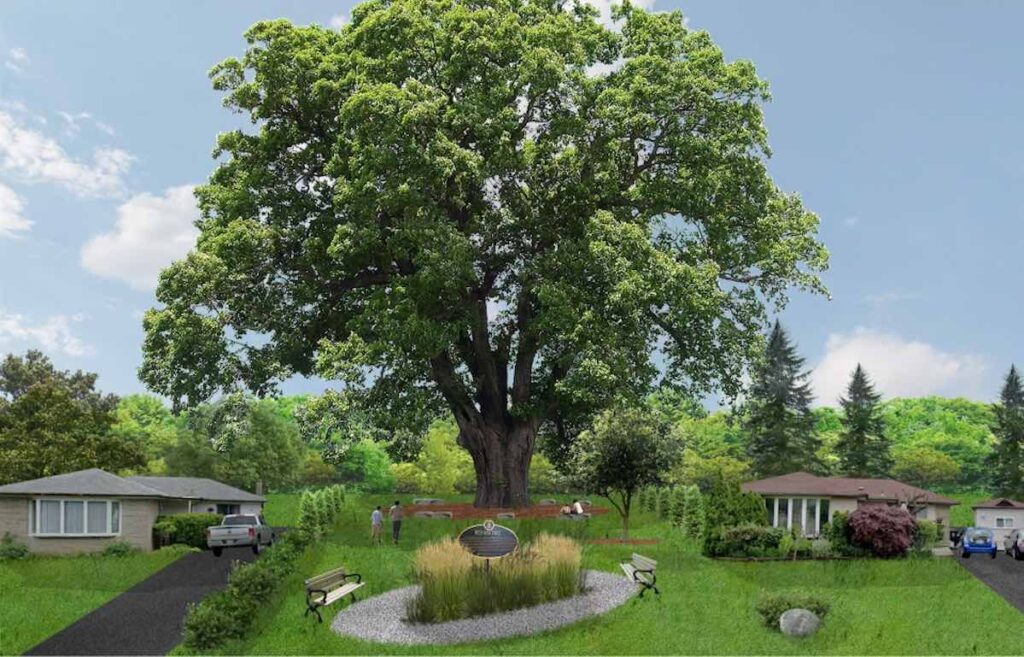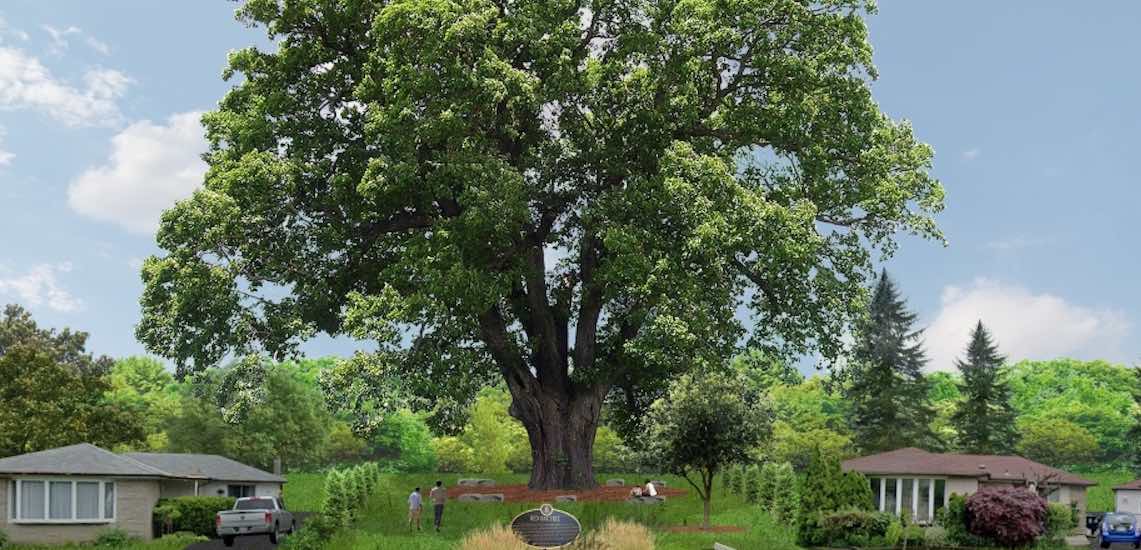One of the oldest trees in Canada, a towering red oak believed to be more than 250 years old, was facing the axe when a new homeowner bought the property. But now, thanks to a last-minute vote by the city, the tree will be saved for future generations.

On November 26, the Toronto City Council voted to preserve this mighty oak by authorizing the purchase of the property for the creation of a mini-park.
Due to its size, age, beauty, and cultural significance, the magnificent tree is already recognized as a heritage tree under Forests Ontario’s Heritage Tree Program.
Fully matured, the red oak’s branches span 78-feet (24 meters) with a trunk circumference of over 17 feet (5m).
With generous monetary support from 1,300 donors helping to raise money, the city will make up any shortfall to secure the property’s purchase and establish the space as a parkette, to preserve and showcase this beautiful oak.
RELATED: The Search Engine That Plants Trees With Every Search Has Just Planted its 100-Millionth Tree
A decade ago, Heritage Toronto unveiled a commemorative plaque, which captured this great oak’s place in the city’s natural heritage, which reads in part:
“The large red oak (Quercus rubra) situated in the backyard of 76 Coral Gable Drive is more than 250 years old, making it one of the oldest in the city. Before Europeans colonized this area, the Humber River branch of the Toronto Carrying Place trail system Opens in new window passed nearby. The tree was part of its delicate savannah ecosystem. This network of trails and portages was used by Indigenous peoples to travel between Lake Simcoe and Lake Ontario and to trade throughout what is now Southern Ontario and beyond. The tree survived European settlement despite logging along the Humber River, clearance of the land for agriculture, and the development of this suburban neighbourhood in the early 1960s. The Coral Gable Drive red oak is a remarkable specimen of its species.”
LOOK: Man Succeeds Where Government Fails: He Planted a Forest in the Middle of a Cold Desert
Community Benefits
The ecological, social and economic benefits inherent to preserving and fostering canopy cover are many, including reducing fine particulate matter air pollution, cooling the air by shading surfaces and releasing water vapor, providing habitat for wildlife, reducing storm-water runoff, sequestering carbon from the atmosphere and providing a link to the natural history of the area. In 2020, it was calculated that this oak stores 2.5 tons of carbon dioxide per year.
Donors from across the city, province, and beyond, have helped ensure the property is secured and will help create a new home for Toronto’s tree. People can donate money to support the creation of the parkette, and help create a befitting setting for the magnificent tree.
RELATED: Tree-Filled City Parks Make People as Happy as Christmas Day, Says Study of Twitter Posts
SHARE This Towering Good News and Praise Toronto on Social Media…




















